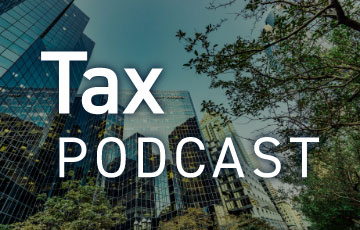For the first time since 2012, Michigan is offering a research and development (R&D) tax credit. For tax years beginning on or after January 1, 2025, companies can claim a tax credit on a portion of their qualified research expenses (QREs). The text of the new law can be found here.
Michigan Research and Development (R&D) Tax Credit
Created by HB 5100 and HB 5101, and signed by Governor Gretchen Whitmer, the Michigan R&D tax credit offers businesses a financial incentive to conduct research and development activities within the state. This includes activities such as:
- Basic Research: Fundamental scientific studies that expand knowledge
- Applied Research: Research aimed at discovering and developing new products and processes
- Experimental Development: Systematic work to design, develop and improve products and processes
The annual cap for Michigan’s R&D tax credit program is $100 million, $25 million of which is set aside for small businesses.
Michigan State R&D Tax Credit Qualifications
For businesses with 250 or more employees, a credit is available equal to 3% of QREs up to the base amount, and 10% of QREs exceeding the base amount (limited to $2,000,000 of credit). For businesses with fewer than 250 employees, a credit is available equal to 3% of QREs up to the base amount and 15% of QREs exceeding the base amount (limited to $250,000 of credit).
The base amount is calculated as the average annual QRE for the three years preceding the credit year. This calculation differs from the federal Alternative Simplified Credit method, which uses a base amount equal to 50% of the average QREs for the prior three tax years.
Taxpayers who collaborate with a research university within the state may be eligible for an additional credit of 5% on their QREs that exceed a specified base amount. To claim this additional credit, taxpayers must provide the department with a copy of the written agreement with the research university if requested. The additional credit allowed under this provision, however, is capped at $200,000 per tax year for each taxpayer.
Definition of Qualified Research
Qualified research activities for purposes of the credit are no different than those established in Internal Revenue Code (IRC) Section 41. The specific expenditures allowable include:
- Wages paid to employees conducting, directly supporting or directly supervising qualified research
- Supplies used in the R&D process
- A portion of amounts paid to third-party vendors performing research on behalf of the taxpayer in Michigan
How To File for the R&D Tax Credit in Michigan
To be eligible for a 2025 tax credit, a taxpayer must submit a tentative claim on or before April 1, 2026. The tentative claim must include the following information:
- The QREs incurred
- If applicable, the QREs incurred for collaboration with a research university
The taxpayer will then report the credit on their annual tax return. Suppose the amount of the credit exceeds the tax liability of the taxpayer for the tax year. In that case, the portion of the credit that exceeds the tax liability of the taxpayer for the tax year becomes refundable.
Your Guide Forward
Partnering with Cherry Bekaert's Tax Credits & Incentives Advisory team can significantly enhance a business's ability to capitalize on the new Michigan R&D tax credit opportunities. Our professionals offer tailored guidance to help companies understand and maximize their eligible tax credits, ultimately leading to substantial cost savings. With specialized advice and strategic planning, businesses can better position themselves to thrive in Michigan's economic landscape. Reach out today to learn more.








